Matador Network's Blog, page 1143
March 13, 2019
Nikkei cuisine and where to find it

“Nikkei” just sounds like a word people are going to use wrong.
You can almost hear a half dozen people sitting around a violet-lit table in some SoHo hotspot asking stuff like, “Is the octopus tonight Nikkei? Perhaps you could go back and ask the chef.”
While the waiter looks on confused another chimes in, “Kylie ONLY eats Nikkei now. It’s like sushi, but lower-carb.”
“And, like, all the fish has to be flown in from Peru,” says another.
“And they mix it with six different kinds of pomegranates,” another pipes up over a Martini. “Nikkei is everything.”
Theoretically, everyone in this hypothetical situation is right. Nikkei could be everything. With barely a century of history and only a handful of restaurants serving it, there’s not enough tradition to really say what Nikkei is and what it isn’t. That’s not to say Nikkei is the next ambiguous non-term restaurants throw on their menu to sound avant-garde, like “farm-to-table.” But it’s a lot harder to define than, say, Chinese food, which we all recognize when we see it.
Even those who make this Japanese-influenced Peruvian food don’t often have a straight answer when you ask them what makes something Nikkei. Yet as it’s become the hottest trend in restaurants over the past year or so, chefs around the world are quickly finding their own definitions.
How Nikkei was invented

Photo: Mandarin Oriental Miami
“Nikkei” isn’t a cuisine name at all, but rather a term for Japanese people living outside Japan. Nikkei the food started with the Japanese who moved to Peru around 1889 to work in the sugar cane fields. Some of the immigrant community that came opened restaurants. Lacking many of their traditional ingredients, they began using Japanese cooking techniques with stuff they could find locally.
Take the thinly sliced, ceviche-like fish dish called tiradito, for example. It’s flash-cooked in citrus and has become a staple on Nikkei menus. It’s commonly served with jalapeno, an ingredient added from Peru.
“Ceviche is Peruvian, through and through,” says Kurt Zdesar, whose Chotto Matte restaurant brought Nikkei cuisine to London, Miami, and soon Toronto. “Peruvians had limes in abundance, and it allowed them to preserve fish. The ceviche you’d consider Nikkei now is not about preserving, it’s about adding flavor. So maybe instead of lime, you’re using yuzu. It’s an inspiration that that’s evolved from Japanese techniques.”
This might lead one to think the acceptably loose definition of Nikkei is Peruvian food made with Japanese techniques. But even that is a little too restrictive.
On a sunny Miami afternoon, Diego Oka, the executive chef at Miami’s La Mar, orders up a creamy purple plate of thinly sliced octopus in a light sauce called pulpo al olivo.
“This is octopus, Peruvian olives, olive oil, and avocado,” Oka explains as he shoves the pulpo in his mouth with a cracker. “There are no Japanese ingredients in this, but it was created by a Nikkei chef, Rosita Yiruma, [who’s] super famous. It’s not a Peruvian dish, but it’s from the Nikkei cuisine.”
He also mentions a black snapper cooked in a salt crust from Humberto Santo, another Peruvian Nikkei chef.
“It’s so new, there are no traditional recipes,” Oka says. “Each chef represents what they think is Nikkei food. It’s a fusion but could be a confusion if you do it wrong. You have to respect the Peruvian culture and the Japanese culture. You can’t just put soy sauce on this salad and say it’s a Nikkei salad. Or if you cook a sushi with ceviche, you have to respect the rice. The technique. The fish. Then do the leche de tigre respecting Peruvian flavors, then merge it.”
Nobu brings Nikkei to America.

Photo: Mandarin Oriental Miami
Though Nikkei restaurants seem to be popping up like gourmet burger joints were five years ago, the style wasn’t found much outside of Peru until the 1980s. That’s when a sushi chef from Lima’s Matsuei opened his own spot in Los Angeles. His name was Nobuyuki Matsuhisa. The restaurant, Nobu.
“People think Nobu is Japanese, but if you read Nobu’s menu, he uses all these Peruvian ingredients,” says Oka. “It’s aji amarillo, anticuchos, tiraditos, aji panca.”
Nobu was the first to really bring Nikkei to America, later joined by fellow fine dining chain Zuma. But it wasn’t until recently it’s become available to people who can’t afford $250 a person for dinner.
Now you’ll find spots like Sushiria in Washington, DC, which has an approachable menu of Nikkei dishes. Vegas has a Nikkei restaurant called Once in The Venetian that’s owned by Ricardo Zarate, one of the guys who helped open Zuma. You can even find Nikkei in food halls, like Itamae in Miami’s St. Roch Market. Its chefs were just nominated for James Beard awards.
“When we first opened, I had to educate the market that this wasn’t Japanese, it was Peruvian-Japanese,” Chotto Matte’s Zdesar says. “Now in London, there’s probably 20-30 places doing the same thing.”
Why you’ll see Nikkei cuisine everywhere

Photo: ChunChang Wu/Shutterstock
So why, all of a sudden, is the world in love with a 100-year-old cuisine they just discovered? Some of it’s fueled by an interesting twist on the familiar.
“Nikkei cuisine can go all over the world because even if people don’t know Peruvian food, they know Japanese food,” says Zarate, who owns Once. “But it’s a very different flavor profile, so it’s attractive to anyone in the world.”
Part of the growth has also come from Lima’s recognition as a world-class culinary destination. Its two most notable Nikkei restaurants, Maido and Central, both landed in the top 10 of San Pellegrino’s vaunted 50 Best Restaurants in the World list. Ask anyone who’s just been to Lima how the food was, and it’s like asking someone to tell you about Crossfit.
Even if you don’t have time to listen (or to get to Lima), just hearing about the flavors will get you excited about Nikkei.
“Peruvian and Japanese ingredients combine perfectly,” Oka says. “You put Peruvian peppers with soy sauce, it’s perfect. The acid with the saltiness.”

Photo: Mandarin Oriental Miami
But Nikkei’s popularity may have as much to do with its low-carb, low-fat dishes as it does how good it tastes.
“It’s super popular because it’s easy to eat again and again,” says Chotto Matte’s Zdesar. “There’s no creams or fats in this food. It’s really lean but full of flavor.”
Because the food is healthy, Zdesar surmises, people will eat at a restaurant more often because they won’t be weighed down. Which means more repeat customers for restauranteurs.
“I think I eat every day in this restaurant, and I always look forward to it. So I know that means it can be eaten regularly,” he says. “If a customer came for dim sum once a month, they’ll come once a week for this, easily. With the same audience we have a much bigger appeal, and more regularity.”
This is why other spots, like Sushiria, have their eyes on expanding far past America’s culinary hotspots.
“I don’t think there’ll be one on every corner, but I can see four or five in major cities,” says Sushiria owner Mauricio Fraga Rosenfeld. “That’s our plan, to move city to city. I’ve seen some other [restaurant groups] doing more casual dining. So it may become more of a casual thing.”
As health-conscious and Keto-crazy Americans begin to discover this crazy little Latino-Asian hybrid we call Nikkei, it’s likely to become even more accessible. Though the rules for what it is might be loose, the flavors are unique, and the style hasn’t yet reached sushi-level saturation. Whether it continues its momentum or evolves into something else remains to be seen. But as long as people keep talking about it (even without knowing what it means), it’ll remain hot. 

More like this: 15 Peruvian foods so delicious they’ll blow your mind
The post Everything you need to know about Nikkei, the Japanese-Peruvian cuisine sweeping the US appeared first on Matador Network.

Millions of butterflies migrating

Seeing one butterfly is enough to make us giddy, so the swarms of millions of painted lady butterflies currently flying at speeds of 25 mph from southeastern California to the Pacific Northwest and Canada for the spring season are just blowing our minds.
The painted ladies are cousins to the monarch butterfly, and are colored orange, white, and black. The population explosion this spring is due to the heavy rainfalls in the desert of northern Mexico and southeastern California and the flower blooms that ensued. Arthur Shapiro, professor in the Department of Evolution and Ecology at UC Davis, explained to the Los Angeles Times, “The more plants, the more butterflies. So any year you have a real big bloom in the desert is potentially a big year for Painted Ladies.” Such large numbers of painted ladies had not been seen since 2005.
People on the butterfly flight path, including Los Angeles, have reported sightings of the swarms. Painted ladies fly at eye level, so they are easy to observe.
Shapiro explained that the migration should last another week or two before the beautiful insects make it out of the state to cooler climates. The painted ladies will fly back to the deserts in the fall. 
H/T: L.A. Taco

More like this: 7 psychedelic places in nature that look like they could be on another planet
The post Swarms of painted lady butterflies are migrating across California appeared first on Matador Network.

Best travels apps in 2019

Whether you’re a frequent flyer for work or taking off on the trip of a lifetime, apps can make your travels a lot easier. There are apps to help you pack, keep track of itineraries, keep in touch with folks back home, and even to help your fitness goals as you go. Here are nine must-have travel apps in 2019.
1. Track your travel: App in the Air

Photo: iTunes
A personal travel assistant for frequent fliers, App in the Air tracks everything about your travel, from flight delays and boarding/landing times to boarding passes and real-time TSA security line wait times. In addition, the app uses crowdsourced information to highlight places where you can grab a bite to eat during airport off hours or even find little-used charging spots. If your flight is majorly delayed, the app’s “nearby” feature locates other travelers to connect with — maybe one who can get you into the elite lounge, share an Uber into town with, or just to pass the time with. App in the Air also keeps track of frequent flier program information, so you don’t have to mess with clunky apps or try to remember multiple usernames and passwords.
2. Keep on track with your fitness routine: Zeamo
For frequent travelers or those who need to stick to a gym or physical therapy schedule, Zeamo brings users access to over 25,000 gyms around the world. Filters can be used to find exactly what workout you’re looking for: from lap pools to yoga, boxing to tai chi; even gyms with daycare, saunas, and massages. A click of a button gets you a day pass and you’re free to work out. Visiting a local gym is also a great way to get involved in the local community and let’s be honest, sometimes small hotel gyms just don’t cut it.
3. Communicate with locals: Google Translate

Photo: Google Translate
Sure, it’s nice to be fluent in languages other than your own but if you aren’t, Google Translate is a must-have. The app allows users to type or speak directly (for character-based languages), on their phones to translate over 100 languages. It even translates photos, for those looking to navigate potential obstacles such as traffic signs and menus. Google Translate also features an offline mode, which enables use of the app when Wi-Fi is not available. Even if you’re not traveling, it’s a great tool to have to learn some of the basic pleasantries and phrases you might use someday when your dream trip comes true.
4. Cut the cost of airport lounges: LoungeBuddy
LoungeBuddy allows users one-time access to airport lounges without costly yearly membership fees or elite mileage status. Most lounges are in larger, more-traveled airports in cities including London, Berlin, Dubai, Denver, Las Vegas, and Sydney, but if you happen to have some time in an airport without an in-network lounge, you can purchase access through the app. It’s a great buddy to have when you have a long layover or find yourself stranded due to unexpected travel delays.
5. Check in with a loved one: Postagram

Photo: Google Translate
Postagram has been on the market for years but the idea behind it, sending a postcard, is even older — which makes it all the more charming. Checking in when you’re away from home is nice, but a surprise keepsake in the mailbox of a friend or loved one is even nicer. All you have to do is choose a picture, add your note, and send it (cost is $2 in the US and $3 internationally). 2019 is the year for more meaningful conversations but if you’re not looking to get completely analog, Postagram is a good free option.
6. Get help packing your bags: Packpoint
This detail-oriented app helps you pack for a trip so you won’t suddenly find yourself needing something important, be it clean socks or important medications. Packpoint creates a packing list based on the length of a trip, the weather at your destination, who you’re traveling with (such as children), and activities you plan on pursuing. The list can be customized and then shared with others you might be traveling with.
7. Track and share your adventure: Polarsteps
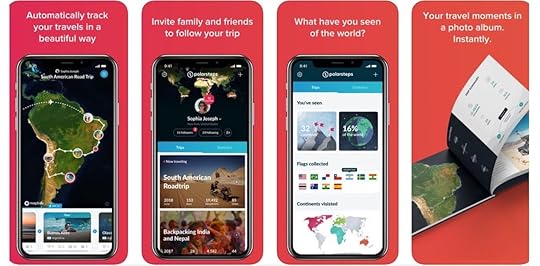
Photo: Polarsteps
Whether you’re traveling cross-country or across continents, this app allows you to document and share every step of your adventure. Polarsteps tracks your travels, allowing invited users to tune in and see where you’ve been, where you’re at, and where you’re going, along with the pictures and videos you share along the way. Once your trip is complete, the app gives you the option of creating a slickly designed travel book to preserve memories from that trip of a lifetime.
8. Stay in reliable contact with family and friends: Whatsapp
If your phone plan is too cost-prohibitive for supporting service as you travel abroad, Whatsapp is an easy way to stay in contact with friends and family at home — or even new ones you make along the way. The app runs off Wi-Fi instead of cell service, allowing users to stay in contact via text, photos, and videos, and even supports voice and video chat. All you need is your contacts list and the person on the other end to be connected as well.
9. Connect with locals: travelstoke
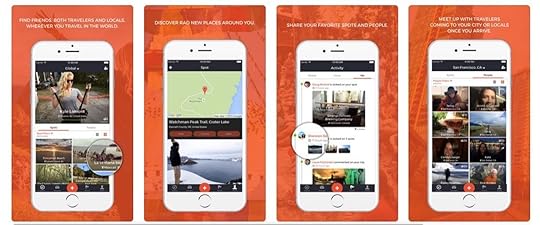
Photo: travelstoke
Matador Network’s own travel app, travelstoke, allows you to plan your trip based on information from locals and experts, and even meet up with them once you arrive. Crowdsourced information on destinations is organized in lists and also by topic, allowing users to search by destination for anything from food, places to stay, shopping, music, and outdoor activities. Trip planning questions can be posed to the community and you can even provide information on your hometown, to help get other adventurers stoked for their travels. 

More like this: The 10 best apps for working out on the road
The post The 9 must-have travel apps in 2019 appeared first on Matador Network.

Boeing asks all 737 Max 8s grounded
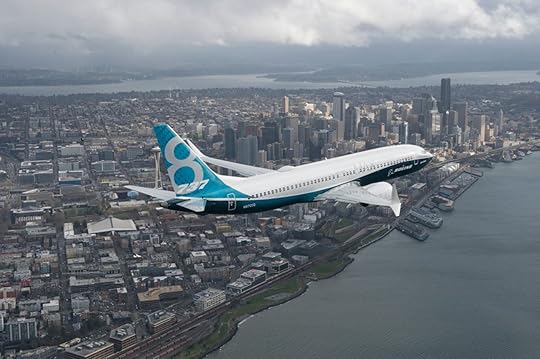
Shortly after the US became nearly the last country in the world to ground its Boeing 737 Max 8 planes, Boeing itself issued a statement saying it would tell the FAA to ground its entire fleet. Dennis Muilenburg, president of Boeing, said in the statement, “We are supporting this proactive step out of an abundance of caution. Safety is a core value at Boeing for as long as we have been building airplanes; and it always will be. We are doing everything we can to understand the cause of the accidents in partnership with the investigators, deploy safety enhancements and help ensure this does not happen again.”
The statement did not cite any new findings or safety data to reinforce Boeing’s recommendation.
Boeing finally relented after the US became one of the world’s last countries to temporarily ground its 737 Max 8s in the wake of the Ethiopian Airlines crash. The US joined a host of countries including the whole of the EU and the UK, which banned Boeing 737 Max 8s until a thorough safety investigation could take place. The US finally caved to pressure from lawmakers, and from both the Republican and the Democratic parties, who called for these planes to cease operations.
Ted Cruz, chairman of a subcommittee on aviation and space, said, “I believe it would be prudent for the United States likewise to temporarily ground 737 Max aircraft until the FAA confirms the safety of these aircraft & these passengers.” Democrat Elizabeth Warren, who couldn’t be farther from Cruz on the political spectrum, said that the US should follow the example of other countries and “get these planes out of the sky.”
In light of the decisions of regulatory agencies across the world to ground the Model 737 Max, I believe it would be prudent for the United States likewise to temporarily ground 737 Max aircraft until the FAA confirms the safety of these aircraft & their passengers.
— Senator Ted Cruz (@SenTedCruz) March 12, 2019
Although the Federal Aviation Authority (FAA) previously did not believe there was enough evidence to ground the planes, it’s singing quite a different tune following Boeing’s recommendation, as apparent by the tweet below. 
#FAA statement on the temporary grounding of @Boeing 737 MAX aircraft operated by U.S. airlines or in a U.S. territory. pic.twitter.com/tCxSakbnbH
— The FAA (@FAANews) March 13, 2019
H/T: CNN

More like this: Several countries ground all Boeing 737 Max 8 aircrafts after fatal Ethiopian Airlines crash
The post Boeing orders its entire 737 Max 8 fleet to be grounded appeared first on Matador Network.

Boeing to update control software

Five months after the crash of Lion Air Flight 610, and less than a week since the crash of Ethiopian Airlines Flight 302 — both involving Boeing 737 Max 8s — Boeing has announced that the plane model will receive updated flight-control software. This is an effort not only to prevent future incidents, but also to reassure the international community that its planes are safe to fly. Several airlines have grounded their 737 Max 8 planes and several countries, including the entire EU and UK, have banned the aircraft model from their airspaces, and Boeing is eager to get its fleet up and running again.
In a statement from March 11, 2019, Boeing insisted that its Max 8s are already safe, and that this update merely makes them more so. The new flight control software, it said, is designed “to make an already safe aircraft even safer. This includes updates to the Maneuvering Characteristics Augmentation System (MCAS) flight control law, pilot displays, operation manuals, and crew training.”
Boeing has not announced any physical changes to the aircrafts, but the update is scheduled to be released across the entire 737 Max fleet in the next few weeks. By improving the MCAS, Boeing hopes to lay to rest any concerns about its planes’ safety capabilities.
According to Business Insider, since the Max planes have larger engines, Boeing had to change the way it mounts engines on the new model. This disrupted the plane’s center of gravity and caused the Max models to tip their nose slightly upward during flight. The MCAS is supposed to counterbalance that tendency and point the plane nose downward. Reports from the Lion Air investigation — and speculation during the current Ethiopian Airlines investigation — showed that a faulty sensor may have triggered the MCAS at the wrong time, shortly after takeoff. 
H/T: Business Insider

More like this: The world’s safest airlines of 2019
The post Boeing will update the control software on its 737 Max 8s that may have caused them to crash appeared first on Matador Network.

March 12, 2019
Cost of living around the world
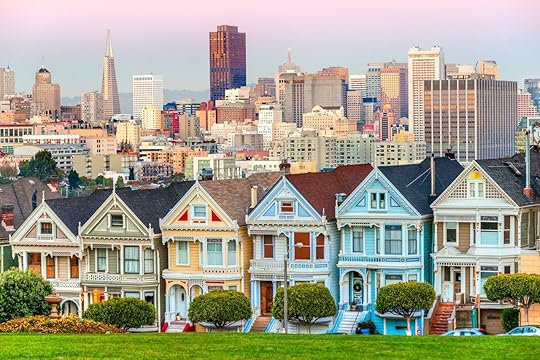
Rent sucks everywhere. Half of the United States is rent-burdened, meaning they spend more than one-third of their income on rent. And when you hear a stat like that, sometimes you think moving to another country might help your situation. But the truth is, it’s tough around the world.
To see exactly how tough it’s gotten, relatively, the furnished apartment experts at Nestpick examined 740 neighborhoods in 50 cities, then determined the annual salary a single person would need to live in each city, spending only one-third of their income on rent. Once they made that calculation, Netpick looked at the real local salaries to discover how much of people’s after-tax expendable income is actually going towards it. The results aren’t pretty, but they give us a pretty good snapshot of exactly how burdensome it is to pay rent in the developed world.
Editor’s Note: Rent figures are given in US currency, and the exchange rate is based on the rate at the time of publication.
50. Budapest, Hungary
Annual salary required: $22,225
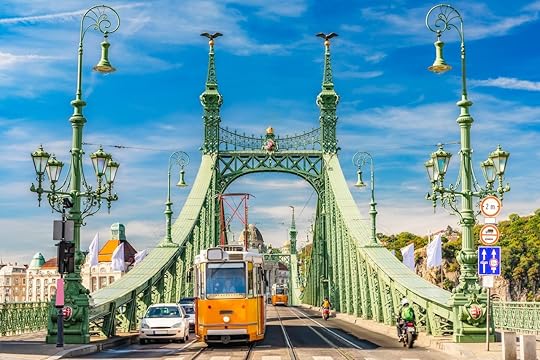
Photo: Marc Osborne/Shutterstock
At first glance, this Hungarian capital might seem like a bargain, with average rents as just a smidge over a dollar per square foot. But salaries here don’t exactly keep up, and you’d need to work an inhuman 195 hours a week at the country’s minimum wage to afford even an average apartment. And residents spend nearly 60 percent of their disposable income on rent.
49. Glasgow, Scotland
Annual salary required: $25,353
This gritty, arts-driven Scottish city has recovered well from its economic problems of the late-20th century, and with music festivals and college students abounding, it’s seemingly a great bargain. Just be aware that you may want to work for a company based elsewhere, as even basic rent can eat up 85 percent of your expendable income based on average local salaries.
48. Cologne, Germany
Annual salary required: $25,977
Somewhat surprisingly, the EU’s most consistently stable economy also offers cities with some of the cheapest rent, with Cologne leading the inexpensive way. Average rent is only $1.21 per square foot for single people and $1.25 for families, meaning a family can live comfortably on just over $56,000 a year.
47. Hamburg, Germany
Annual salary required: $26,685
The northernmost major city in Germany is also among its least expensive, where you’ll spend only 28 percent of your expendable income on rent. This should leave plenty of extra cash for quick trips up to Copenhagen where dinner might cost you more than rent back home.
46. Berlin, Germany
Annual salary required: $27,866
For a city that tops many people’s lists of European favorites, historic Berlin is pretty cheap. The city that boasts some of the best clubs in the world and fascinating historic sites like Checkpoint Charlie and the fascinating Topography of Terror museum has rents at just under $1.30 per square foot for single people. That means you wouldn’t even need to work 70 hours a week at minimum wage.
45. Montreal, Quebec, Canada
Annual salary required: $28,533
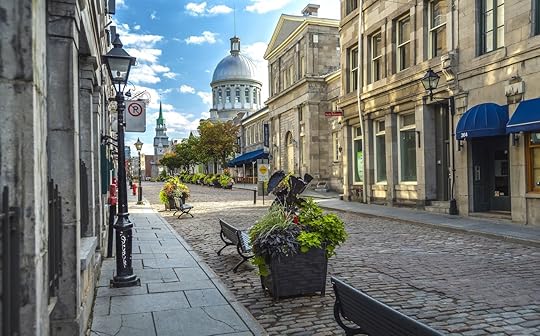
Photo: ProDesign Studio/Shutterstock
Cheapest city on this side of the pond? That’d be Montreal, a place massively popular with tourists that’s also surprisingly affordable. Not only is it the sixth-cheapest place for singles, it’s the second-cheapest for renting family homes with prices averaging 84 cents per square foot. When a family of four can live on $38,000 a year, learning French seems a small price to pay.
44. Prague, Czech Republic
Annual salary required: $29,448
With a slew of bars offering cheap beer in one of Europe’s most affordable capitals to visit, your money goes a long way in Prague. Provided you work for someone outside the country. Though rent pales in comparison to most of the US, it eats up over 70 percent of expendable income for locals, requiring 227 hours at a minimum wage job to make ends meet.
43. Manchester, England
Annual salary required: $30,691
Manchester is never really lauded as a nice city, necessarily. But if you’re cool to live in the British equivalent of the sports-mad rust belt, you can make a nice home for yourself. Rent for families is $1.26 per square foot, meaning you’d need to make just over 56k a year as a family to afford it.
42. Frankfurt, Germany
Annual salary required: $30,700
Frankfurt lands right near where most “experts” claim should be the mean for an affordable city. With 36 percent of income going towards rent and 75 hours a week needed working minimum wage, the relative cost of living here seems, for lack of a better word, fair. What’s not fair is that instead of the middle, it clocks in as the ninth-most-affordable city on the list.
41. Porto, Portugal
Annual salary required: $32,117
The cheap-life-by-the-beach fantasy doesn’t always mean to Central America or Thailand! Portugal’s coastal gem backs right up to one of the world’s great wine regions, like a little California at a fraction the price. Families can still get a place for under a dollar per square foot, though at local salaries you’ll still spend 61 percent of your expendable income on rent.
40. Warsaw, Poland
Annual salary required: $32,694

Photo: fotorince/Shutterstock
In terms of average salary required for rent across single people and families, Warsaw is actually the cheapest city on the list. Family homes require $22,000 a year to afford, meaning it may be cheaper for you to rent an entire house than a flat in the city center if you’re living here solo.
39. Brussels, Belgium
Annual salary required: $34,242
Brussels boasts one of the cheapest average rents for singles in the EU, with a scant $1.09 per square foot. But even with rent that low it’ll take up half your expendable income if you work locally, where you’d also need to put in a full 80 hours at minimum wage to make it work.
38. Vienna, Austria
Annual salary required: $34,478
As, quite possibly, the most livable city in the world, you’d expect Vienna to be much higher up on the list. But it’s decently affordable, and single life won’t kill you with just under 40 percent of your income going to rent. Viennese families fare a little worse, though, as you’d need to make nearly twice as much to live here with kids.
37. Rome, Italy
Annual salary required: $34,715
Despite labor-friendly employment laws, you’d still need to log over 200 hours a week at a minimum wage job to afford rent in the most-affordable Italian city. That said, at normal wages, you only spend 40 percent of your expendable income on rent if you’re single.
36. Lyon, France,
Annual salary required: $35, 423
Dreaming of leaving it all behind and adopting the continental lifestyle in France? Lyon might be a wiser move than Paris, where you’ll need to make about half what you would need to afford rent in the City of Lights. You’ll have a lot more money to play with, too, as Lyon requires only 21 percent of your expendable income for rent, lowest on the list.
35. Milan, Italy
Annual salary required: $35,423

Photo: MarinaD_37/Shutterstock
Though Milanese people might sometimes act like their rent is the same as it is in other fashion capitals like New York, it’s actually among the cheapest in Europe at $1.65 per square foot. That’s about half the cost in Paris and about a third of NYC.
34. Edinburgh, Scotland
Annual salary required: $38,030
The home of the world’s most famous fringe festival has much of the same income disparity issues of its hard-nosed counterpart in Glasgow. Though rent here might seem cheap at under $2 a square foot for singles and under $1.50 for families, it’ll still eat up nearly 90 percent of your expendable income and require 95 hours a week of minimum wage work.
33. Dubai, United Arab Emirates
Annual salary required: $39,922
No, you won’t be dining in 19-star hotels or enjoying cocktail hour atop the Burj Khalifa making $40,000 a year. But at least you’ll be able to afford an apartment with air conditioning. At $1.81 per square foot, rent is cheaper here than most North American cities. You’d doubtfully be moving to Dubai for a minimum wage job, which is good because it would require 318 hours of work a week to afford even average rent. Difficult with there being only 168 hours in seven days.
32. Madrid, Spain
Annual salary required: $40,146
Just a smidge more affordable than beachside Barcelona, Madrid requires only $63,000 a year to live comfortably as a family. And though rent will still eat up 54 percent of your expendable income, at a median of $1.41 per square foot, families might still be able to find a lot of cheaper options.
31. Barcelona, Spain
Annual salary required: $42,508
A veritable toss-up in terms of cost of living between Spain’s two largest cities, though Barca rent eats up 60 percent of your expendable income versus 54 percent in Madrid. It’s another city where you’re ill-advised to move with a minimum wage job too, as rent would require a physically-impossible 181 hours a week to afford.
30. Lisbon, Portugal
Annual salary required: $44,869

Photo: SF/Shutterstock
Though visitors rave about Lisbon’s relative affordability ($2 beers FTW!) living here, particularly for families, is not so cheap. You’d need to make over $70,000 annually to afford family life, with rent taking up an uncomfortable 68 percent of your expendable income. It’s also the first city on the list whose rent tops $2 per square foot at $2.08 for single people.
29. Helsinki, Finland
Annual salary required: $46,995
On the other end of the visitor-resident cost dichotomy from Lisbon is Helsinki, a place where $6 cans of Pringles are the norm but rent is still a reasonable $2.18 per square foot. While manageable for singles, family life in the Finnish capital can be costly. They’ll need to make nearly $92,000 a year to make it work here, one of the biggest disparities on the list.
28. Tokyo, Japan
Annual salary required: $47,117
The biggest city in the world by population isn’t as expensive as you’d think, with average rents cheaper than any American city on the list at $2.19 per square foot. Families fare worse at $2.39, and though that’s still not even in the top 20 worldwide, it still eats up 58 percent of expendable income.
27. Rotterdam, Netherlands
Annual salary required: $49,852
If you’re dead set on going Dutch in your expatriation, you might want to look at this city just southeast of The Hague as an alternative to Amsterdam. You’ll need to earn about $25,000 a year less than you would in the capital, and though rent will eat up over 60 percent of your expendable income, that’s still better than 91 percent in Amsterdam.
26. Chicago, Illinois, USA
Annual salary required: $55,800
If you don’t mind a little cold, Chicago is the cheapest US city on the list, with rent for families especially affordable at $1.70 per square foot. Life for singles isn’t bad either, with rents nearly half of what they are in New York City and only 26 percent of expendable income going for shelter from the wind chill. That leaves plenty of money for large winter coats, too.
25. Munich, Germany
Annual salary required: $59,039

Photo: Oleksiy Mark/Shutterstock
Ask people outside Germany and most people wouldn’t guess Munich is the most expensive. But this automotive and aerospace hub has brought with it an affluent workforce that’s driven rent to an average of $2.74 per square foot for singles and $2.04 for families. That’ll eat up 55 percent of your expendable income.
24. Miami, Florida, USA
Annual salary required: $60,000
If you took a winter vacation down to Miami, felt the warm tropical breezes, and thought to yourself, “I could live here,” make sure you’ve got the money to do it. While not as expensive as New York or San Francisco, Miami is far and away the costliest in the southeast, with average rent at $2.79 per square foot for single people. That’s before you discover the $21 vodka-sodas at LIV.
23. Toronto, Ontario, Canada
Annual salary required: $60,152
Though for single people Canada’s largest city can be costly with rents $2.73 per square foot, the abundance of livable suburbs make it a fairly affordable place for families. Where singles need to make over $60,000 to live here, families need only about $75,000, with rent at $1.64 — or roughly the same as Madrid and Barcelona.
22. Davos, Switzerland
Annual average salary: $63,238
Presumably, the folks at Nestpick must be huge fans of scenic train rides since that’s about the only reason we can think this little Alps town of 11,000 is on a list between Toronto and Sydney. This scenic spot where you’ll board a train straight to the Matterhorn is the most affordable Swiss city on the list. Which isn’t saying much if you’ve ever been to Switzerland, but at least it lets you live with a mountain view for $2.94 per square foot.
21. Sydney, Australia
Annual salary required: $64,493
The largest city down under is unsurprisingly expensive, the first city on the list to top $3 a square foot for single-person rent. Families get no break, with prices at $2.15 a square foot — topped only in the bottom 30 by Tokyo. You’d need to work 122 hours a week in Sydney at minimum wage to afford rent, which doesn’t leave you much time to enjoy Bondi Beach or any of the other things you moved here to enjoy.
20. Copenhagen, Denmark
Annual salary required: $68,606

Photo: Oleksiy Mark/Shutterstock
Anyone who’s ever dropped $15 on a beer along Nyhavn might be shocked to see Copenhagen this far down on the list. But tourist-trap beer prices don’t always directly correlate to cost of living, as you’d need fewer than 100 hours a week of minimum wage work to make rent. At $2 a square foot, it’s also not painfully expensive for families, requiring just over $90,000 a year.
19. Stockholm, Sweden
Annual salary required: $68,620
A virtual tie here between the Swedish capital and its brother-in-Scandinavian-expensiveness Copenhagen, where you’ll shell out $3.19 per square foot to enjoy one-degree-high temperatures and six hours of daylight during the winter. You won’t have much left over for SAD lamps either, with rent taking up two-thirds of the city’s average expendable income.
18. Los Angeles, California, USA
Annual salary required: $69,000
The bad news for Angelinos is that rent in their sprawling city keeps going up, now at $3.24 a square foot for single people and $2.11 for families. The good news is SoCal salaries are pretty competitive, and your average resident is only paying a third of their expendable income on rent. Of course, this figure also includes people living in far-flung parts of the city and driving an hour each way to work. So they might have more money but a lot less time.
17. Washington, DC, USA
Annual salary required: $71,300
Taxation without representation and insanely high rents don’t exactly make the nation’s capital seem all that inviting, but rent here has still snuck ahead of Miami, LA, and Chicago. It’s also the first city on the list to crack six figures for families, as people with kids will need $107,800 to live here comfortably. DC salaries, at least, have kept pace, with only 31 percent of expendable income going to rent.
16. London, England
Annual salary required: $74,059
Interestingly, though greater London doesn’t even crack the top 10 most expensive cities, the City of London proper is the most expensive neighborhood in the world, where you’ll need $121,000 a year to live comfortably. Westminster and Kensington/Chelsea aren’t much better, as the fourth and fifth most expensive neighborhoods, respectively. London is massive, however, with plenty of outlying areas that keep the average down. It’ll just involve a lot of time on the tube if you live there.
15. Zurich, Switzerland
Annual salary required: $75,247
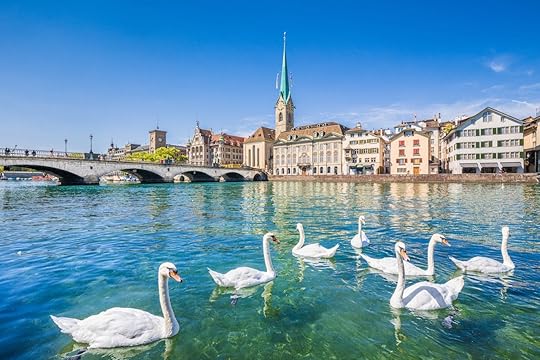
Photo: canadastock/Shutterstock
You know Switzerland is insanely expensive when a country that stretches only 15,000 square miles has two of the 20 costliest cities in the world. Though rent in Zurich is actually a little cheaper than London and DC at $3.50 a square foot, stuff like $8 coffees drive up the cost of living, so you’ll need to make considerably more to survive. Good thing Swiss banks pay well, as average residents still only spend 38 percent of their expendable income on rent.
14. Amsterdam, Netherlands
Annual salary required: $75,334
In a city where hotels average over $350 a night, paying $3.51 per square foot for rent shouldn’t shock many people. And while many European cities boast salaries that keep up with rent, Amsterdam is not one of them, where you’re out 91 percent of your money for rent alone. Families have it a little easier, where $101,000 a year keeps you living comfortably. Sounds high, until you realize it’s the cheapest family rent in the top 18.
13. Paris, France
Annual salary required: $75,570
Single nomads take comfort: While the money you’d need to live in Paris is alarmingly high, you still fare better than the average Parisian family. Though the fantasy of having your own little Madeline to dress up and send to school might be appealing, you’ll need $155,000 a year to make it happen. That’s the fifth-highest in the world, more than even Shanghai and Seoul.
12. Dublin, Ireland
Annual salary required: $75,971
People outside Ireland have probably never heard of the Dublin 2 neighborhood, but it’s $5.58-per-square-foot rent averages higher than Boston’s Back Bay, the Presidio in San Francisco, and the seventh arrondissement of Paris. Dublin is actually home to three of the 100 most expensive neighborhoods in the world, with Dublin 3 and Dublin 4 also cracking the list. The city as a whole averages $3.45 a square foot, and you’ll need 82 percent of your expendable income to afford rent.
11. Geneva, Switzerland
Annual salary required: $79,541
Nowhere is the extreme cost of living in Switzerland more evident than Geneva, where families need to make $108,000 a year to live above the “burdened” line. The study showed that many do, however, as rent is only, on average, 39 percent of expendable income. Good in a place where younger residents have been known to cross the border into France to buy more-affordable groceries.
10. Singapore
Annual salary required: $80,0555
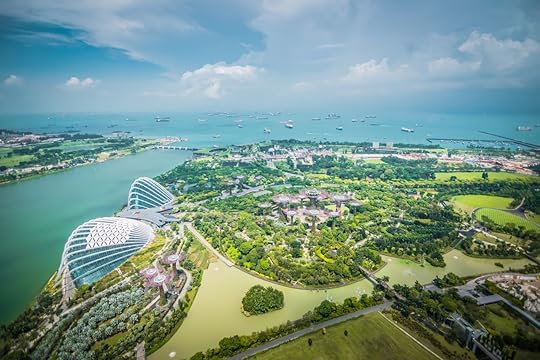
Photo: Kritsaroot Udkwae/Shutterstock
You might not need to be Asian, but you definitely need to be crazy rich to live in Singapore. There’s some big income disparity in this wealthy city-state, as 99 percent of the average expendable income goes to rent. And with few real suburbs, there aren’t many affordable commuting options either. You’d need to work 468 hours a week in a minimum wage job to afford Singapore. That equates to over 11 traditional American workweeks.
9. Bay Area, California, USA
Annual salary required: $82,231
San Francisco’s Bay Area is so big and so expensive, this study split it between the city proper and everything else. That includes Silicon Valley, Santa Clara, San Mateo, the East Bay, and pretty much everywhere else around the water. The staggering prices near San Jose are offset by the less cripplingly expensive East Bay, and those willing to commute find a much easier financial time. The average Bay Area resident outside SF only spends 32 percent of their expendable income on rent, despite paying $3.82 per square foot.
8. Boston, Massachusetts, USA
Annual salary required: $92,000
Perhaps we understand a little better why Boston drivers are so angry and their fans so intolerable when we realize only New Yorkers and San Franciscans spend more on rent in America. Families need to clear $128,000 a year to live in Boston, where residents spend over 40 percent of their expendable income on rent. Much of the credit there goes to the Back Bay, the most expensive neighborhood in America outside SF and NYC.
7. Hong Kong
Annual salary required: $94,411
Not that many people think about settling down and having kids in one of Asia’s biggest financial hubs, but those who do have it rough. Hong Kong is the second most expensive place for families on the list, where you’ll need about $229,000 a year to not be “burdened.” Rent for single people isn’t much better at $4.72 per square foot, and you’d need a world’s-third-worst 536 hours a week at minimum wage to afford life here.
6. Bermuda
Annual salary required: $96,000
Fun fact: There are 181 islands in Bermuda. Another fun fact: It’s home to the seventh most expensive neighborhood in the world in the capital city of Hamilton. And though it’s only 20 square miles, it still packs some of the highest rents in the world. Unlike other massively expensive cities, Bermuda isn’t big or crowded or full of towering skyscrapers. But of all the tropical paradises in the world this one costs the most, with rent at $5.53 a square foot.
5. New York, New York, USA
Annual salary required: $100,000
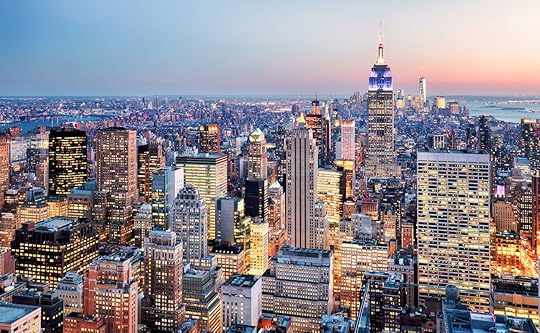
Photo: TTstudio/Shutterstock
The self-proclaimed center of the universe is the first city to crack six-figure-required salaries for single people, and anyone who’s ever read a blog post from a New Yorker is well aware how financially painful it is to live here. Salaries are high too, but with taxes, the average resident is spending 45 percent of their expendable income on rent, and that’s before ever setting foot in a taxi. At $5.40 a square foot, it’s the third most expensive residential real estate on the list, and yes, that factors in all five boroughs. Take out Staten Island and some parts of the Bronx, and it’s even worse.
4. Shanghai, China
Annual salary required: $109,110
China’s most expensive city isn’t Hong Kong but rather this megalopolis of 26 million people that sees its average resident spending 129 percent of their expendable income on rent. And last we checked, Social Credits aren’t redeemable with landlords. Though Chinese economics work a little differently than in the US, the minimum wage in Shanghai is still shameful when compared to rent, requiring a world’s-worst 619 hours a week.
3. Seoul, South Korea
Annual salary required: $109,110
Seoul is a bit of a surprise at number three, the most expensive city in Asia that rarely enters the conversation about absurdly expensive places. A full 118 percent of expendable income goes towards rent in the South Korean capital, where rent for single people is $2.33 a square foot, but salaries don’t compare with similarly priced Tokyo. It’s also home to two of the most expensive neighborhoods in the world in Jongo and Sujeong.
2. San Francisco, California, USA
Average salary required: $121,400
The sixth most expensive neighborhoods in America are in San Francisco, led by the Financial District South where rent’s $6.96 per square foot, and you’ll need to make $125,000 a year to make it work. In total, 14 of the 35 most expensive neighborhoods on the list are in the Bay Area, and only New York City has any that compare. With California state income taxes, the money in the Golden State isn’t quite so golden: Despite some of the highest salaries in America, SF residents still spend 48 percent of their expendable income on rent.
1. Monaco
Annual salary required: $165,309
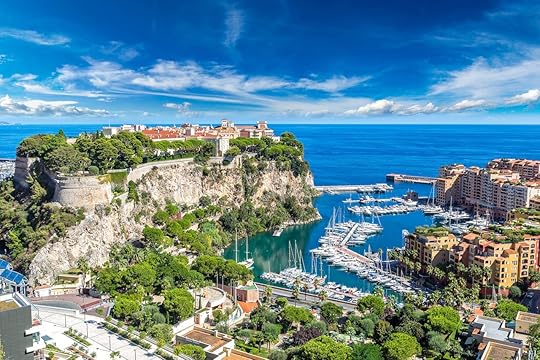
Photo: SF/Shutterstock
A city known as a haven for billionaires shouldn’t surprise anyone as the most expensive place to live. The average rent for non-Monegasque residents is $7.68 per square foot for singles and $10.24 for families. That’s nearly three times the next highest. Most people who work in the city live in Nice or nearby French villages, and those who are legal citizens of Monaco get their rent subsidized. But they make up a mere fraction of the population, leaving this little principality cost-prohibitive for nearly everyone in the world. 

More like this: 9 cities you should move to while you can still afford them
The post This is how much you need to make to live in 50 of the world’s biggest cities appeared first on Matador Network.

Best live music venues in Belfast

Fiddled trad tunes hang in the air across Belfast, but the city is actually home to great clubs hosting everything indie folk to old-school London punk bands. Most are concentrated in the highly walkable, central part of town — known as the Cathedral Quarter — so you can step dance, grind, and mosh your way satisfaction even if you only have a day or two. There’s also a strong population of college students, meaning you’re likely to find something going on every night of the week across town. No matter what type of music you’re looking for in Belfast, here’s where to find it.
For trad sessions and a pint

Photo: Robinsons Bars/Facebook
Traditional Irish music, known as “trad” on the pub scene, can be found in watering holes across the city. Experiencing a trad session is an absolute must-do in Belfast and typically involves a group of musicians huddled into a corner in a busy pub playing classic Irish tunes, while people drink their beer and dance on any free space on the floor. On weekends, it isn’t uncommon for sessions to begin in the early afternoon, and you can keep the party going well into the night by moving between pubs.
The Dirty Onion
One of the most common quests in Belfast, and indeed the whole of the Emerald Isle, is the search for live trad music. Some pubs have impromptu Sunday afternoon jams, others bring in a band on weekends. The Dirty Onion makes your quest an easy one — live music, mostly trad, every single night. Add in the fact that it’s located in the oldest building in the city, built in 1680, and the fact that they never charge a cover, and there’s no reason to even bring Google into the equation.
Where: 3 Hill St, Belfast BT1 2LA
Robinson’s
Robinson’s provides daily trad music in its Fibber Magee’s pub and has been doing so since 1895, with four other rooms on site to complete the traditional Irish pub experience. Pints of Guinness flow in each, which include a pool hall and a traditional Irish saloon, as well as BT1, home to one of Belfast’s more rowdy karaoke sessions on Thursdays, Fridays, and Saturdays. You can warm yourself in a comfy chair by the fire and chat the day’s gossip. But before heading into Fibber’s for the trad session, have dinner at the Bistro — just don’t ask what pairs well with the Chicken Goujons or the Steak & Guinness Pie. Save yourself and the server the trouble and order a round of the black stuff.
Where: 38-40 Great Victoria St, Belfast BT2 7BA
The John Hewitt
Raising money for good causes by selling booze is a time-tested practice employed by NGOs and nonprofits the world over, and The John Hewitt has taken the concept and turned it into a business model for social good. The bar, opened in 1999, is owned by The Belfast Unemployed Resource Centre. The pub is named after the center’s founder and partially funds its mission to educate and empower Belfast residents from tough economic backgrounds. The John Hewitt features live music Monday through Saturday nights and is home to one of the city’s favorite drop-in trad sessions on Sunday afternoons. Have a drink, listen to some jams, and feel good while you do it.
For rock gigs and the indie scene
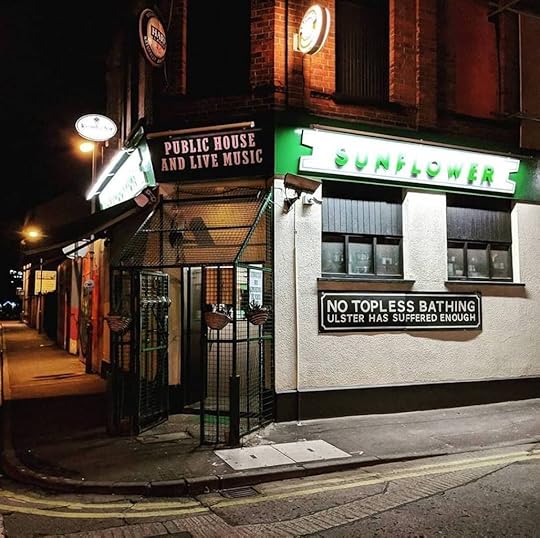
Photo: Sunflower Public House & Live Music/Facebook
Belfast’s music scene draws influence from London, Dublin, and beyond, and blends in the unmistakable personality of the city and Northern Ireland. Clubs line the Cathedral Quarter and Queens Quarter, serving a variety of music on a nightly basis.
Voodoo
Voodoo is a rock club and mohawk hangout that wouldn’t be out of place on Bourbon Street, accentuated by the vibrant reds and maroons that cover the place. It also serves Cajun food like gumbo to complement. This means you can get your spicy food fix — not an easy thing to do in Belfast — before you headbang to the hottest rock bands in Northern Ireland. Voodoo hosts everything from metal to modern rock to British ska, depending on the night. Music happens upstairs while the bottom floor of the club is the place to pregame or pop in for a quick nightcap.
Where: 11A Fountain St, Belfast BT1 5EA
Sunflower Public House
When the night calls for diving into craft brews and mellow live music, Sunflower Public House is the spot. You might find a local singer-songwriter or there might be a folk rock band on the road from the States, but there’s always someone playing, and the beer menu is as good as any in town. They also host an open-mic night on Mondays and often have trad music as well. The pub is located in the western part of the city not far from Falls Road and Shankill Road, and even today, it has the original security cage from the Troubles out front of the main entrance.
Where:65 Union St, Belfast BT1 2JG
The Black Box
The Black Box is the place to get intellectual. The club is about 50 percent music venue, with the remaining 50 percent split equally into writer’s bar and ultra-weird film house, and is generally filled with a collection of interesting characters. They host some great bands — often ones you’ve heard of if you follow the UK rock scene, and you can always bet on something going on here in this Cathedral Quarter club. It’s a come-as-you-are kinda place and one of the easiest ways to have a chat with a local college kid who won’t be shy to tell you his thoughts on the band, the drink specials, and the famous street art of the surrounding neighborhood.
Where: 18-22 Hill St, Belfast BT1 2LA
For big-name headlining acts

Photo: The Belfast Empire/Facebook
Belfast’s classic theatres and large-scale venues make it a regular stop on European tours for bands from both sides of the pond.
The Belfast Empire
Most simply call it The Empire, and this is the type of place where both grit and nostalgia run deep. The music hall at The Belfast Empire packs nearly 500 eager fans into its quarters to catch mid-level touring acts on the verge of becoming defining names in their genre, cover bands such as the UK Guns & Roses and The Bon Jovi Experience, and the cream of Belfast’s local scene playing to their base of frenetic locals and college kids. If you’re walking through the Queen’s Quarter looking for something to do at night, stop by The Empire — there’s usually a crowd out front, and you’ll hear the tunes booming through the doorway. Each Tuesday the clubs turns its focus to comedians for the Empire Laughs Back comedy series, an equally popular attraction.
Where: 2 Botanic Ave, Belfast BT7 1JQ
Limelight
Limelight draws ticketed crowds out to catch the best names in Indie, hip hop, and beyond. The spot, off Ormeau Ave, brings in both up-and-coming indie bands recently big enough to headline a raucous party on their own and big names like Oasis and Steve Aoki looking to do an intimate gig for their fans. The club also tosses in the occasional comedy show for good measure. Limelight is split into two clubs, aptly named Limelight 1 and Limelight 2, and on a good night, the entire place is packed and rowdy. If you need to give your ears a rest, head upstairs to the rooftop Rock Garden, a good place to mix with players from the music scene even on nights when the clubs aren’t hosting big names.
Where: 17 Ormeau Ave, Belfast BT2 8HD
Ulster Hall & Waterfront Hall
Every good city has that one club that has forever left its mark on the heart of longtime locals. The one where you saw your favorite band play in high school. In Belfast, that club is Ulster Hall, and odds are that your favorite band is playing there on their next European tour (seriously, check the calendar). The club is historic, originally built in 1859 and owned by the local city council. Even if you don’t catch a concert, walk by the hall on Belford Street and take a photo of its classic facade. It’s home to the Mulholland Grand Organ, the oldest traditional English pipe organ still around, and has been the jumping off point for many political rallies and causes over the years.
Where: 34 Bedford St, Belfast BT2 7FF 

More like this: Why you shouldn’t leave Belfast without taking a Black Taxi Tour
The post The best places for live music in Belfast appeared first on Matador Network.

Where to eat in Kensington Market
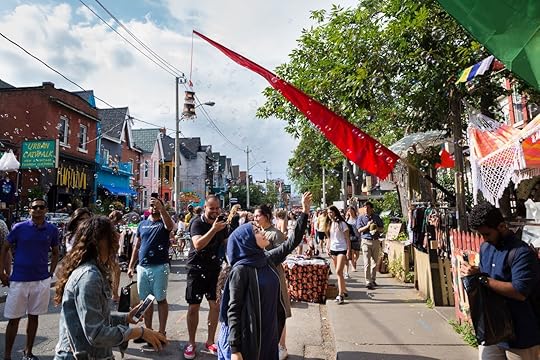
It’s hard to keep track of the number of different languages and dialects you’ll hear in Kensington Market in downtown Toronto on any given day. Nearly half of the population is foreign-born, and some 200 languages are spoken in the city. The market area has historically been a gathering point for immigrant communities, and the diverse restaurant landscape reflects that.
I see this firsthand as I wait to try a momo (a type of Tibetan dumpling) for the first time at the Tibet Café and Bar, one of four Tibetan establishments in the area and the only restaurant. Owner and chef Tenzin Yewong brings me two steamed momos, one vegetarian and one beef. They look like dumplings, only bigger and round instead of half-moon shaped. Paired with the homemade hot sauce, they make a zesty introduction to Tibetan cuisine.
Yewong learned to cook Tibetan specialties from her mother. When she started her restaurant, she chose Kensington Market because of its inclusivity. She says, “[it] is homey and you never feel out of place. The businesses here support each other. I have many fond memories from the past 11 years.”

Photo: DeymosHR/Shutterstock
Kensington Market has a history of welcoming people of all backgrounds. It was a Jewish market in the early 1900s. A large Portuguese population moved in in the 1950s, followed by Chinese, Indians, Koreans, Vietnamese, and Filipinos. People from Latin America started moving in in the late 1980s. Chef John Lee, a consultant, restaurateur, and professor at George Brown College’s Center for Hospitality and Culinary Arts, says the market “has always been a first stop for many an immigrant and transplant to the area. The influence of the first Jewish refugees to the area is evident in the spirit of the people that have welcomed others for over a century who are fleeing persecution, oppression, and poverty from all corners of the world.”
Today, Kensington Market is a draw for artists and creative types alike and has a strong social network composed of “mom and pop” shops — and local owners work hard to keep it that way. Over the years, small business owners have successfully fended off large corporations like Nike and Walmart with organized protests, garnering more than 90,000 signatures in favor of preserving the character of Kensington Market.
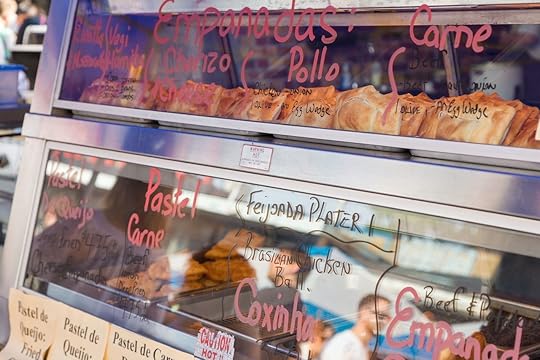
Photo: Adam Melnyk/Shutterstock
Thanks in part to this dedication to local owners, Kensington Market is still an international food hub where you can eat authentic Chinese spring rolls, Jamaican patties, and Canadian poutine all in the span of a few blocks. In the spring and summer months, the streets come to life with long lines from the most popular establishments spilling out onto the sidewalks. Smells from baked, fried, and sautéed goods waft through the air, pulling guests in all directions.
Lee recommends visiting on the last Sunday of each month for Pedestrian Sundays. The streets are blocked off to traffic, and the market is “turned into an open walking fair showcasing street food, performers and all manner of arts and crafts for sale.”

Photo: Shawn Goldberg/Shutterstock

Photo: Adam Melnyk/Shutterstock
Those wanting a guide to the tasting process can turn to Tasty Tours Toronto, a company that highlights unique food options and engaged businesses in the area. Founder Audrey Ooi explains that when choosing locations, “Ideally the owner or staff has the time and interest to share their story with tour guests, as the tour is about making connections through food.”
Connection through food is what happens at the Livelihood Café, a nonprofit that gives refugees a path to sustainable employment through training and new arrival assistance. It was there that I met Jasmine Yilmaz, a Syrian refugee and TEDx speaker who helps others overcome trauma.
Jasmine serves traditional Arabic tea, pouring the piping hot substance into a shot glass pre-filled with a sprig of thyme. She was forced to leave her home in Damascus because of her political beliefs and lost her family in the process. Upon arriving in Canada, she found renewed hope. She’s grateful to have a community where she’s accepted and can keep her culture alive by sharing one thing that’s of universal interest to us all — food.

Photo: PANCHO’S BAKERY/Facebook
For dessert, I head to Pancho’s Bakery. The staff is wearing shirts that say “I Love Churros,” and I instantly feel a sense of kinship. This is churro heaven, serving everything from dulce-de-leche-stuffed churros to churro ice cream cones. After an afternoon of eating around the world, Pancho’s is the proverbial cherry on top.
It’s no coincidence that the most diverse city in the world also has the best food market. Kensington Market is proof that when cultures blend and support each other instead of building walls, the outcome is very palatable. 

More like this: The 10 most epic food halls in the US
The post The most diverse city in the world also has its most exciting food market appeared first on Matador Network.

Three killed in Ben Nevis avalanche

Today, three climbers have died in an avalanche on Scotland’s Ben Nevis, the highest mountain in the UK at 4,413 feet above sea level. Volunteers of the Lochaber and Glencoe mountain rescue teams, a coastguard helicopter, air ambulance, three road ambulances, and a trauma team were sent to the area known as Number 5 Gully.
Two climbers were found dead at the scene and two were airlifted to the hospital; one of them passed away.
On Monday, the Scottish Avalanche Information Service announced that the potential avalanche risk in the area of Ben Nevis was “high” due to the weather cooling down again after a period of warmth and stormy conditions.
Nicola Sturgeon, Scotland’s First Minister, expressed her condolences and called the incident “absolutely tragic news.”
This is absolutely tragic news. My thoughts are very much with the bereaved and injured. And my gratitude as always for the work of our emergency services, Mountain Rescue and Coastguard. https://t.co/h348CWRzgx
— Nicola Sturgeon (@NicolaSturgeon) 12 mars 2019
Unfortunately, these aren’t the first lives claimed by Ben Nevis this winter. On New Year’s Day a German climber perished after falling from a ridge, and in December, a West Yorkshire man died after a fall on the mountain. 
H/T: BBC News

More like this: How to plan an epic road trip through the Scottish Highlands
The post Three killed in avalanche on UK’s tallest mountain appeared first on Matador Network.

Sports tour spots in Dallas, Texas

The city of Dallas is inextricably linked with its sporting culture. The five-time Super Bowl-winning Dallas Cowboys might not have clinched a championship since 1996, but there’s no denying the fierce loyalty of the city’sfanbase — not just to the Cowboys but also the Mavericks, Stars, Rangers, and FC Dallas. Regardless of personal team loyalties, sports fans will never be bored in Dallas. From the state-of-the-art AT&T Stadium that hosts Cowboys games, concerts, rodeos, motocross, and Spartan races, to the National Soccer Hall of Fame and legendary sports bars, Dallas’s sporting culture permeates every aspect of the city. If you’re visiting Dallas and want to fully immerse yourself in its sports scene, here are some places you can’t miss.
These spots were all recommended by travelstoke® user Alicia Butler. travelstoke® is a new app from Matador that connects you with fellow travelers and locals and helps you build trip itineraries with spots that integrate seamlessly into Google Maps and Uber. Download the app to add any of the spots below directly to your future trips.
1. Football: AT&T Stadium

Photo: fitzcrittle/Shutterstock
Built in 2009, AT&T Stadium — affectionately called “Jerry World” after the Cowboys’ owner — is a hub for more than just football. With a total capacity of 105,000, the home of the Dallas Cowboys has also hosted a wide range of events, including NBA All-Star Weekend, college bowl games, three world championship boxing matches, Wrestlemania, Supercross, and dozens of concerts. It boasts the world’s 29th largest HD video screen, hanging between the two 20-yard lines, and a variety of site-specific artwork, including paintings, sculptures, and other installations by contemporary artists. Check out the stadium’s calendar for upcoming events.
Where: 1 AT&T Way, Arlington, TX 76011
2. Baseball: Globe Life Field

Photo: Katherine Welles/Shutterstock
This is an exciting time in Dallas for baseball fans as the Rangers are about to get a brand new stadium. The new $1.1 billion Globe Life Field in Arlington, under a half-hour’s drive from Dallas, is scheduled to open in time for the 2020 season. Featuring a retractable roof to make those hot Texas day games a bit more bearable, the stadium will also include a shopping mall, hotel, and be part of the massive Texas Live! Entertainment complex opening this August. Texas Live! is a one-stop shop for food, music, sports, and lodging, from Guy Fieri’s Taco Joint to the Arlington Backyard outdoor concert venue. The Rangers’ new stadium is going to be a can’t-miss fixture of the popular venue.
Where: Arlington, TX 76011
3. Soccer: Toyota Stadium

Photo: FC Dallas/Facebook
MLS might not crack the Big Four major US sports, but soccer does have a strong presence in Dallas. Located about a half hour north of Dallas in Frisco, Toyota Stadium is more than just the home of FC Dallas, the local soccer club. It’s also the site of the National Soccer Hall of Fame. Whether you’re a fervent FC Dallas fan, a supporter of a rival club, or you’re just getting into the sport, you can easily spend a whole afternoon at the Hall of Fame. Newly opened in 2018, the Hall allows visitors to explore the evolution of soccer in America and learn all about the game’s history and top players. The Hall of Fame is open from Wednesday to Sunday, with adult tickets costing $15. Soccer fans should also pay a visit to Upper 90, Dallas’s nearest equivalent to a European “football” pub in Fort Worth’s Near Southside district.
Where: 9200 World Cup Way, Frisco, TX 75033
4. Basketball: College Park Center
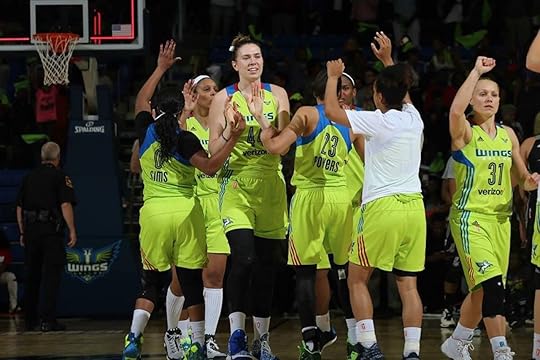
Photo: College Park Center at UT Arlington/Facebook
The Mavericks might not be performing too well right now, but luckily their counterparts in the WNBA are picking up the slack. Established in 2016, the Dallas Wings have made the playoffs their last two seasons, and while they haven’t taken home a championship since moving to Dallas, they certainly have a winning history. Back when they were located in Detroit, the team won three WNBA championships and a total of four conference championships. So while they may still getting their bearings in Dallas, their future is certainly bright. The Dallas Wings share the College Park Center with the Mavericks, and the 2019 season starts on May 24.
Where: 600 S Center St, Arlington, TX 76019
5. Texas Sports Hall of Fame

Photo: Texas Sports Hall of Fame/Facebook
The Texas Sports Hall of Fame in Waco is interesting for any sports-lover, but for die-hard fans of Texas teams, it’s an absolute must. The Hall selects inductees who have made a significant contribution to Texas sports and is dedicated to preserving the legacies of those individuals. The building also houses the Texas Tennis Museum and Hall of Fame and the Texas High School Football Hall of Fame. The Hall is open Monday-Saturday for $7 per person, and you can even take a virtual tour.
Where: 1108 S. University Parks Dr., Waco, Texas 76706
6. Stockyards Championship Rodeo
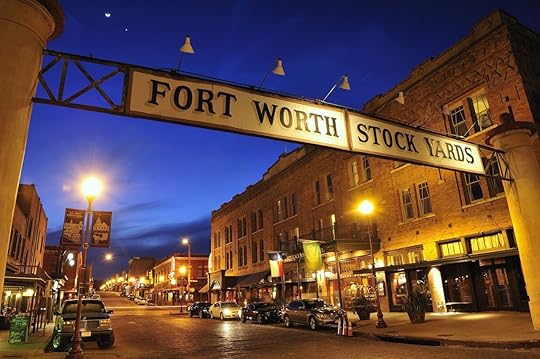
Photo: T photography/Shutterstock
Football and baseball are great, but if you’re in Dallas for traditional Texan culture, there’s only one sport you really need to experience: a rodeo. For the most authentic rodeo around, visit the Fort Worth Stockyards — a bastion of Western history and heritage. Located just over a half-hour from Dallas in Fort Worth, the Stockyards truly embodies the spirit of the wild west, with brick-lined walkways, wooden corrals, and, of course, classic rodeos. Stockyards Championship Rodeo is the world’s only year-round rodeo, taking place every Friday and Saturday night at the Cowtown Coliseum. The rodeo has it all, including bull riding, tie-down roping, team roping, barrel racing, and bronc riding. While you’re at the Stockyards you might as well also check out Pawnee Bill’s Wild West Show, featuring trick roping, trick shooting, trick riding, and cowboy songs.
Where: Cowtown Coliseum, 121 E. Exchange Ave, Fort Worth, TX 76164
7. Time Out Tavern Sports Bar
View this post on InstagramA post shared by Bobbie Marshall (@socialbobbie) on Jul 12, 2015 at 12:42pm PDT
Dallas sports fans from around the country will feel right at home at the Time Out Tavern Sports Bar. Even if you’re not, you won’t find a rowdier or more lively place to watch the day’s games. Just don’t wear an Eagles jersey here. From the NFL to the WNBA, this bar carries all the local Texas area games, and best of all, it lets you watch alongside other superfans. From the wide variety of craft beers to a selection of Champagne for celebrating big wins, you certainly won’t find yourself parched. There are also happy hour specials every day from 2:00 PM to 7:00 PM, including $1 jello shots, in case you really needed an excuse to head to the bar early.
Where: 5101 W. Lovers Ln., Dallas, TX 75209 

More like this: How to save money on your trip to Dallas
The post 7 essential stops on your sports tour of Dallas appeared first on Matador Network.

Matador Network's Blog
- Matador Network's profile
- 6 followers



